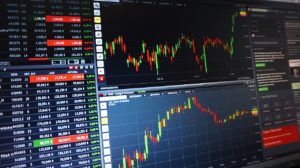
Investors are showing interest in debt-related investment options — as well as the stock market which last week put forth its most promising performance in weeks.
This is according to Jason Colodne, co-founder of Colbeck Capital Management, an NYC-based private credit asset management organization focused on strategic lending.
Economic Snapshot
U.S. corporations have been drawing from the monetary reserves they built up during the COVID-19 pandemic to fund expenditures like acquisitions and additional inventory — and, as a result, their cash balances have, on average, reached pre-pandemic levels, according to a recent Wall Street Journal analysis.
Refinancing existing debt or borrowing more money may prove to be more costly for a number of the organizations that had previously utilized low interest rates available during the pandemic.
Investors’ appetites for higher-risk corporate debt, though, has risen in 2022 — and remains high.
With the S&P 500 15% lower than in January, government, corporate, and other bond funds providing a minus 12% return in the past year, according to a Sept. 8 Journal article, and Treasury-focused funds offering a minus 17% return, holding a mix of stocks and bonds may not provide the same level of protection as before.
Junk bonds, as the Journal noted, currently offer higher yields than in the pandemic’s early days, having risen from 4.42% in January to 8.23%. Higher-rated investment grade bonds increased from 2.45% in the first month of the year to 4.96%.
U.S. leveraged loan defaults reached their highest point in two years in August, according to the latest Morningstar LSTA U.S. Leveraged Loan 100 Index report. The index’s default rate, measured by amount, rose from 0.28% in July to 0.60% last month.
Due to inflation and other economic factors, concern continues to mount that a recession will occur. However, despite gross domestic product contracting in the past two business quarters, the U.S. hasn’t met enough National Bureau of Economic Research qualifications to officially be in one yet, S&P Global Ratings said in early September.
The credit risk research provider noted, though, that almost all its leading indicators suggest negative or neutral near-term growth.
Because of current conditions such as Treasury yield spread activity, including the 10-year and two-year curves inverting for two consecutive months, S&P estimates there is a 45% — or higher — risk of a recession in the next 12 months.
Recent Market Activity
Even with one less day of trading last week, the three major indexes produced primarily positive results, perking up after a sluggish few weeks of movement.
On Tuesday, the S&P 500 fell 0.41%, followed by a 1.83% rise on Wednesday. On Thursday, the S&P continued its upward trajectory, gaining 0.66%. The index also rose 1.5% on Friday, according to initial market results.
The Nasdaq composite index, after a 0.74% loss on Tuesday, climbed 2.14% on Wednesday and gained 0.60% on Thursday. The index closed out the week with a 2.1% increase on Friday.
The Dow Jones Industrial Average dropped 0.55% on the first day of trading last week, but increased 1.40% on Wednesday. The Dow added 0.61% the following day, and ended the week on Friday with a 1.2% gain.
After reaching its highest point since June on Tuesday, the yield on the benchmark 10-year Treasury note was trading 3.271% lower by the end of the day. By Friday, it had risen even higher, hovering at around 3.371% at 4 p.m. ET.
The 30-year Treasury bond, which had traded at approximately 3.464% by 4 p.m. on Thursday, was at about 3.456% at the same time on Friday.
A number of factors influenced both the stock market and Treasury activity last week, including a rise in oil prices after they plummeted midweek to their lowest point since January, due in part to concerns about future energy demands.
About Jason Colodne
Jason Colodne is the senior transaction partner at Colbeck Capital Management and oversees all aspects of investment execution and portfolio management. Colodne co-founded Colbeck Capital Management as a managing partner in 2009. Colodne’s investment experience spans over two decades.
About Colbeck Capital Management
Colbeck Capital Management (colbeck.com) is a leading, middle-market private credit manager focused on strategic lending. Colbeck partners with companies during periods of transition, providing creative capital solutions. Colbeck sponsors its portfolio companies through consistent engagement with management teams in areas such as finance, capital markets and growth strategies, distinguishing itself from traditional lenders. The firm was founded in 2009 by Jason Colodne and Jason Beckman; the principals have extensive experience investing through different market cycles at leading institutions, including Goldman Sachs and Morgan Stanley.
Read more:
Jason Colodne of Colbeck Capital — Sept. 11 Market Rewind





